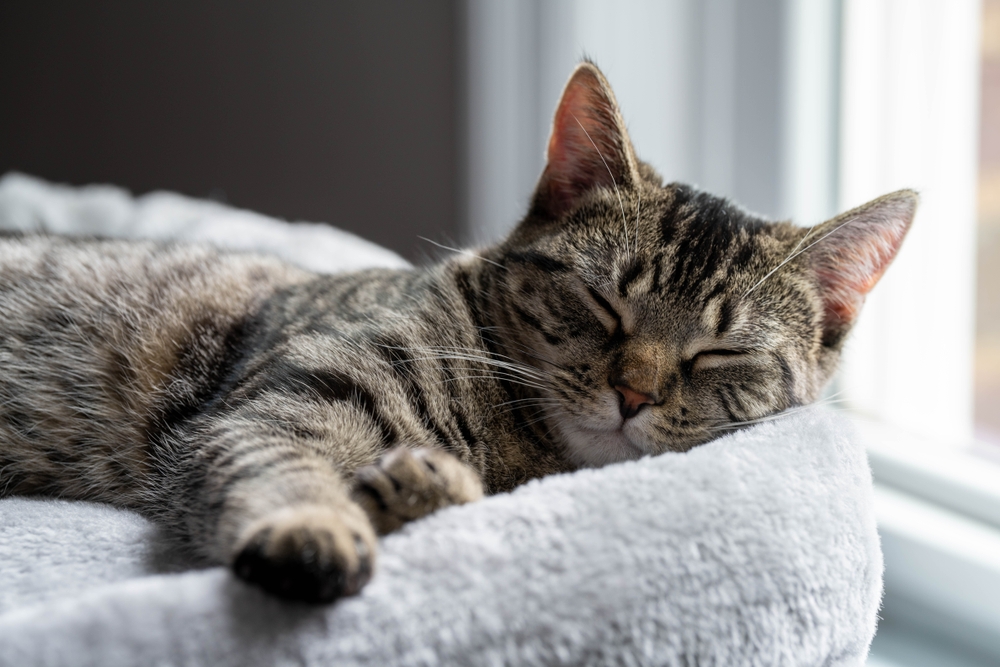Cats aren’t known as open books. And, although their independent and mysterious nature is part of their charm, those traits also can sometimes prevent them from receiving the care and attention they need.
Is your cat suffering from secret joint pain and decreased mobility? Use this guide from your south Austin vet at Oliver Animal Hospital to learn how to recognize feline arthritis.
Feline osteoarthritis: More common than you think
Feline osteoarthritis is a degenerative inflammatory joint disease that affects an alarming percentage of cats. Although the numbers vary, X-ray studies have revealed that 60% to 90% of cats have arthritic changes in their limbs, most commonly the hips, knees, shoulders, elbows, and tarsi (i.e., ankles).
Until now, most veterinarians have underdiagnosed feline arthritis, for several reasons. For a long time, no one considered that cats could be suffering from arthritis, because they did not express pain in familiar, recognizable ways. And, since cats are stoic and hide any weakness for self-protection, the pain or mobility dysfunction they experienced at home could never be appreciated or assessed in a veterinary setting.
Fortunately, as the feline medicine field has grown and expanded, veterinary professionals have learned to understand, interpret, and care for feline mobility.
Feline OA risk factors: Is your cat on the list?
Arthritis is a progressive condition caused by destructive inflammation inside the joint. Once started, arthritis creates a vicious cycle of pain, decreased mobility, and reduced range of motion (i.e., flexibility).
Although cats of any age can experience arthritis in one or more joints, senior and geriatric cats are most commonly affected. Cats may have an increased arthritis risk if they match one or more of these criteria:
- Senior or geriatric life stage — This includes cats over 7 years old.
- Predisposed breed — Some cat breeds, including Himalayan, Siamese, Scottish Fold, and Maine Coon, suffer from abnormal cartilage development that predisposes them to arthritis.
- Previous orthopedic injury or trauma — Bone fractures, orthopedic conditions (e.g., patellar luxation or loose kneecaps, and hip dysplasia), and corrective orthopedic surgeries increase arthritis potential in the joint.
Is your cat showing arthritis signs?
Unlike dogs, cats rarely limp or vocalize to express their pain unless they are in severe distress. Instead, cats display only subtle signs that can easily be mistaken as part of the natural aging process or dismissed as normal cat behavior (e.g., lethargy, hiding). The most common feline arthritis pain indicators are not always physical signs, but they do include behavior and personality changes.
If your cat demonstrates any of the following signs, contact the south Austin vet care experts at Oliver Animal Hospital to schedule an examination.
- Your cat struggles to jump up or down — Cats are admired for their agility and flexibility, but if your cat can no longer leap with effortless grace may be suffering from arthritic changes, such as stiffness, muscle loss, or decreased range of motion. Affected cats may slip or fall, pause before jumping up or down, or select an easier or different path (i.e., using objects or furniture to divide a big leap into smaller jumps).
- Your cat has difficulty using stairs — Similar to jumping, stairs require increased range of motion in the hips, knees, shoulders, and elbows. Arthritic cats may take stairs slowly rather than bound up and down, rest on the stairs, or stay in certain home areas to avoid using the stairs. If your cat’s litter box is located on another level, you may notice house soiling.
- Your cat is having accidents outside the litter box — Climbing inside a high-sided litter box can be excruciating or impossible for arthritic cats and they may choose to eliminate nearby to avoid pain and discomfort. Also, cats who must travel a long distance to reach their litter box (e.g., up or down stairs, down a long hallway) may seek alternative options.
- Your cat has gained weight — Reduced mobility quickly leads to weight gain, which increases the demand on already painful joints. Additionally, pain can lead to depression, which can also contribute to overeating, especially in free-fed cats (i.e., those who graze on food all day).
- Your cat is no longer social or playful — Painful cats are more likely to isolate themselves to avoid potentially painful physical contact (e.g., petting, snuggling). They may also react defensively, become irritable, or act aggressively toward human or pet family members.
- Your cat tires quickly during play or can’t keep up with other pets — Arthritic cats who stay interested in playing typically have poor stamina and shorter reaction times because of reduced flexibility. They may be unable to catch their favorite toy or be active for more than a few minutes.
Help meow-t: Relief for arthritic cats

If you think your cat may be suffering from osteoarthritis, schedule an appointment with your vet in south Austin. The Oliver Animal Hospital team can help you understand your cat’s mobility restrictions, ease their pain with long-lasting injectable medications, make lifestyle changes to help with weight loss, and recommend at-home modifications (e.g., ramps, orthopedic bedding, low-sided litter box) that support pain-free mobility.
For more information on feline arthritis or cat health, contact our caring Oliver Animal Hospital team.







Leave A Comment